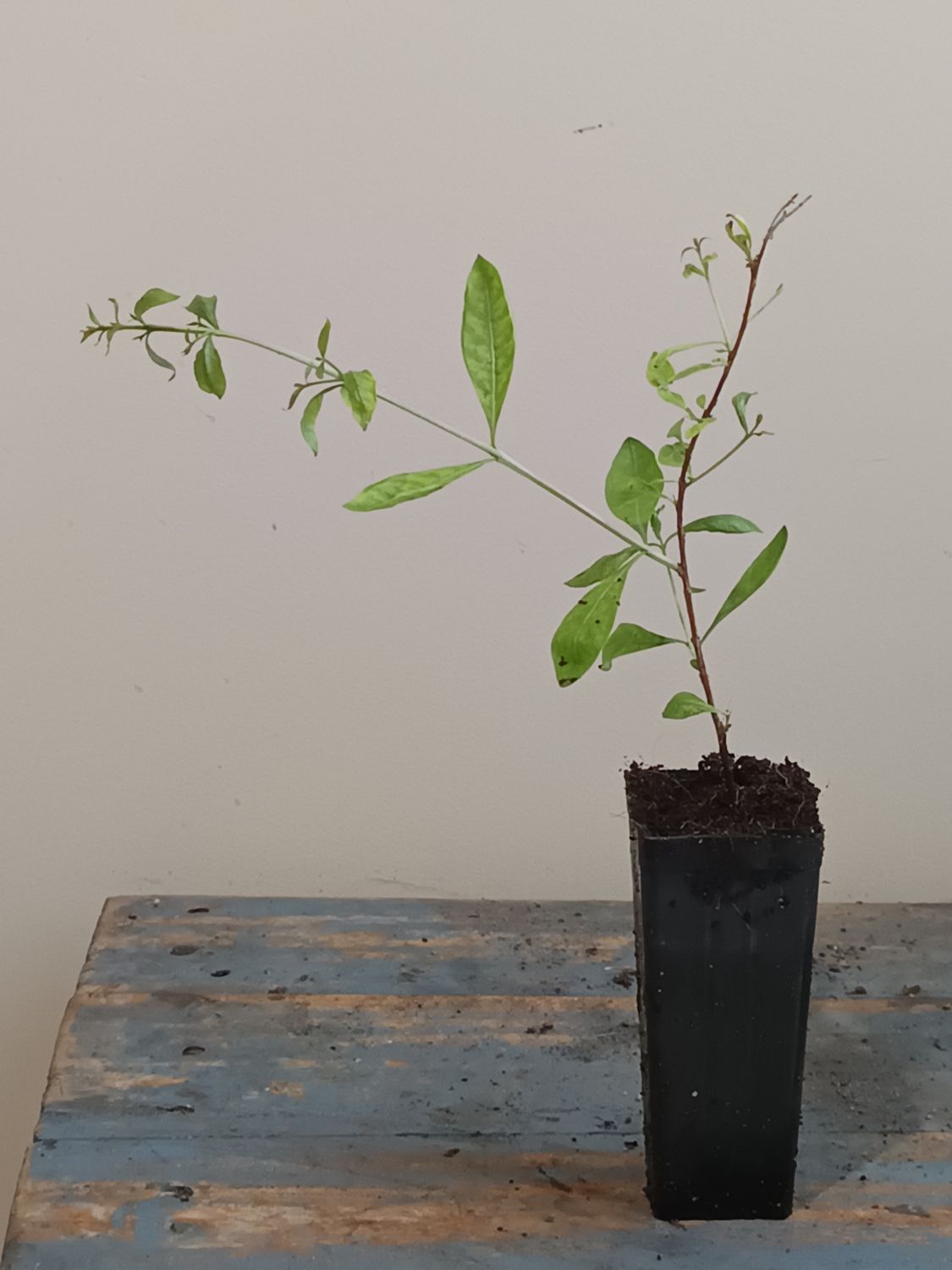Henna Plant extra small
Approx. 5-15 cms plants.
English Names
Henna, Egyptian privet, Mignonette tree
(Lawsonia inermis)
Indian Names
Mehndi (Hindi - मेंहदी), Marudani (Tamil - மருதாணி), Gorintaaku (Telugu - గోరింటాకు)
Named Cultivars
Cultivars of Lawsonia inermis vary mainly in leaf yield and dye content, though specific named cultivars are not widely distinguished.
Origin and Spread
Henna is native to northern Africa, Asia, and northern Australasia. It has been cultivated for thousands of years for its dyeing properties and is now spread across tropical and subtropical regions worldwide.
Plant Uses
Henna is primarily used for dyeing skin, hair, and fabrics. It also has medicinal applications, treating skin conditions and cooling the body. Henna flowers are used in perfumes, while its bark and seeds are used for their astringent properties.
Fruit are not edible
Henna produces small, dark-brown, capsule-shaped fruits that are not typically consumed.
Historical Health Benefits
Henna has been used for centuries to treat skin conditions like eczema and burns, and its cooling effect was used to lower body temperature in hot climates. It has recognised anti-inflammatory and antimicrobial properties.
Ayurveda Applications
In Ayurveda, henna (Rakta Gunjaka) is used for its cooling, astringent, and anti-inflammatory properties. It treats headaches, fevers, and skin ailments such as rashes and wounds.
Medical and Botanical Studies
- 2017, "Antifungal Activity of Lawsonia Inermis," Journal of Ethnopharmacology: Demonstrated lawsone’s effectiveness against fungal pathogens.
- 2018, "Lawsone: Bioactivities and Health Benefits," Frontiers in Plant Science: Explored lawsone's UV protection, wound healing, and antimicrobial properties.
Religious and Cultural Notes
Henna is deeply rooted in various cultural and religious practices. In Muslim cultures, it is used for skin art during Eid and weddings, and dyeing beards is considered a Sunnah. In Hindu traditions, brides are adorned with henna for good fortune and protection. Moroccan Jews use henna in weddings to bless couples. Henna may also be the plant referred to as kāfūr in the Qur’ān, with debate on whether it refers to henna or camphor.
Soil Preparation
Henna prefers well-drained, sandy, or loamy soils and thrives in pH levels of 5.5 to 7.5. It can tolerate alkaline soils as well.
Growing Conditions
pH Growing Conditions: 5.5 to 7.5
Sun or Shade Position: Full sun
5-Year Minimum Pot Size: 20L
Adult Full Size: 2-8 metres
Manageable Prune Size: 2-3 metres
Cold Tolerance: Ideal temperature range is 20°C to 35°C, though it tolerates temperatures down to 10°C.
Time to Fruit from Seed: 3 to 5 years
Watering Requirements
Henna is drought-tolerant and requires minimal watering once established. Water sparingly, allowing the soil to dry between waterings.
Pests and Disease Management
Henna is resistant to most pests but can occasionally suffer from fungal infections in humid environments. Good drainage and minimal watering can prevent these problems.
Companion Plants Recommended and Why
Companion plants like marigold and basil help deter pests and attract beneficial insects when planted near henna.
Pollination
Henna flowers are pollinated by insects, especially bees.
Propagation
Henna can be propagated by seeds or cuttings. Soaking seeds in warm water improves germination, while cuttings from mature wood are also effective for propagation.
Other Interesting Notes
Henna’s dyeing power comes from lawsone, a compound found in its leaves. Lawsone binds to keratin in hair and skin, creating a reddish-brown stain. It also absorbs UV light and has been used in sunscreens. In addition to henna leaves, lawsone is found in walnut shells and water hyacinth flowers, further highlighting henna’s versatility across cultures and uses.
